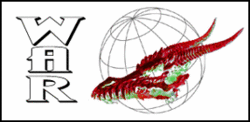Wars for American Territory
| Name(s): | Wars for American Territory |
| Start of hostilities: | Circa 1680s |
| End of hostilities: | Circa 1750s |
| Winning side: | Losing side: |
 Scotland |  France |
 Scandinavian Realm |  Batavia |
 Castile and Leon |  Russia |
 England | |
 Kemr | |
| Resulting treaty/treaties: | Various |
| Major consequences: | Modern militarization of Native tribes, ties between tribes and European colonists |
The Wars for American Territory were a series of small conflicts that took place in the late 17th and early 18th centuries, in parallel to struggles in Europe. Most were relatively short, none were large in scale, and increasingly became shaped by two factors:
- The sheer number of colonizing nations involved, among them England, Scotland, Kemr, Batavia, the Scandinavian Realm, Aragon, Castile, Russia and France.
- The strategy of turning to native tribes as allies, to the point of arming and supplying the various tribes. Historians agree this was a major event in that it insured that the natives could not be overrun by the swelling numbers of Europeans over the next few centuries.
Two of the more obvious results of these conflicts was the shift in ownership of the colony which became the province of Castreleon New and the establishment of what became Ontario--or, more accurately, the settlements that eventually became the basis for Ontario. Some historians see the latter as more important because in time that province/colony put a non-Francophone wedge between Louisianne and New Francy, preventing the creation (according to this theory) of one titanic nation in the wake of the French Revolution, one that would have dominated the northeast and center of North America. Other historians point out this theory ignores the effect of the armed native tribes of the continent, who were much in the majority, and the fact that even areas like Les Plaines and Pays-d'en-haut that were in direct contact with larger Francophone colonies ultimately decided to go their own way. This theory also ignores the intrinsic political and social differences of the two nations, New Francy leaning toward the aristocracy and the League of Noble Emigrees and Louisianne with its eager embracing of Republicanism.
Historians do not agree over which instances of fighting constitute the actual "Wars for American Territory." Another issue is whether the 1755 War should count as one.
